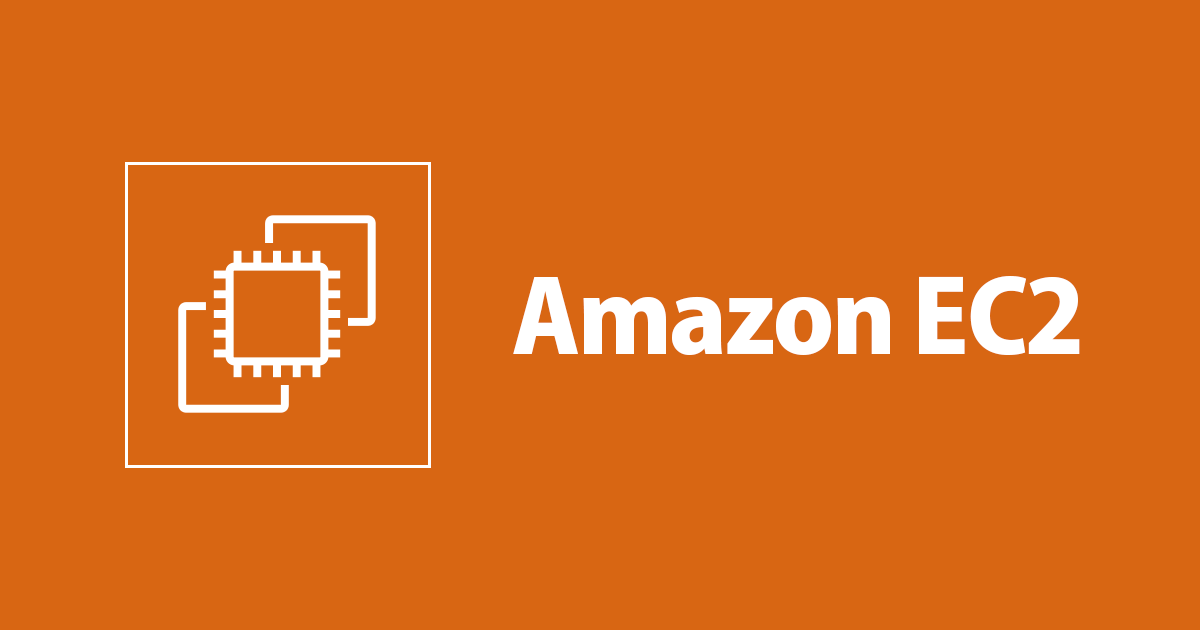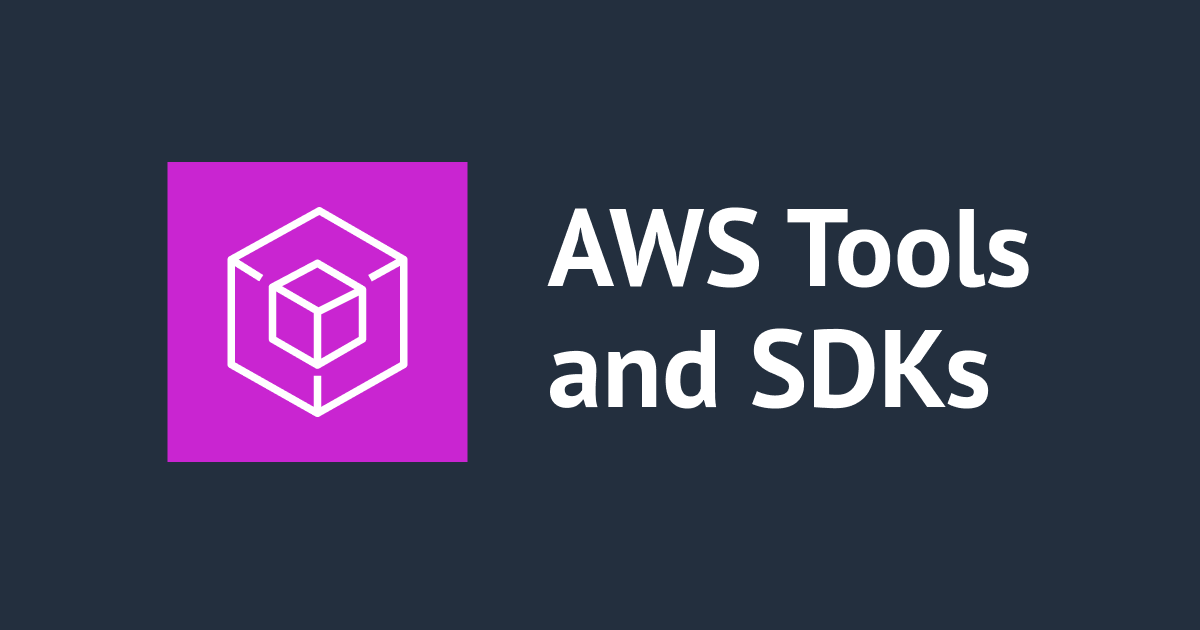
Windows Server EC2インスタンスのプロキシ設定で気を付けるべきこと
しばたです。
エンタープライズな世界ではインターネットへのアクセスをプロキシ経由に制限してる環境がそれなりにあるかと思います。
本記事ではWindows Server EC2インスタンスのプロキシ設定をする際に気を付けるべきことについて説明します。
2つのプロキシ設定
Windowsでは歴史的経緯によりInternet Explorer(およびその他クライアントアプリケーション)のプロキシ設定(WinInet)とWindows Update等のサービスアプリケーション向けライブラリWinHTTPのプロキシ設定と二種類のプロキシ設定が存在します。
この2つのプロキシ設定についてはJapan Developer Support Internet Team Blogの以下の記事が詳しいです。
原理原則としてはどちらのプロキシを設定するのか個別に判断する必要があるのですが、現実的には両方に同じ設定を施すことが多いかと思います。
以下のコマンドでIEのプロキシ設定をWinHTTPの設定にインポートし、設定を同期することができます。
# IE のプロキシ設定を WinHTTP のプロキシ設定へインポート
netsh winhttp import proxy source=ie
このため、まずはIEのプロキシ設定を実施し、その次に上記コマンドを実行するのが良いかと思います。
IEのプロキシ設定で気を付けるべきこと
ここからが本記事の本題になります。
WindowsのEC2インスタンスでプロキシ設定をする際に二点気を付けるべきことがあります。
1. 「ローカルアドレスにはプロキシサーバーを使用しない」設定に関して
IEのプロキシ設定にはローカルアドレスにはプロキシサーバーを使用しないという設定があります。
ケースバイケースにはなるのですが、VPCエンドポイント(インターフェースエンドポイント)を使用する場合はエンドポイントがローカルアドレスになりますのでこの設定を有効にしておいたほうが良いでしょう。

2. プロキシの例外設定に関して
プロキシの例外設定にインスタンスメタデータのアドレスである169.254.169.254を設定しておきましょう。

この設定がないとインスタンスメタデータにアクセスできなくなり、CloudWatch Agent等の動作に支障をきたす場合があります。
IEのプロキシ設定をコマンドから実行する
ここまででIEのプロキシ設定で気を付けるべきことについてはお判りいただけたかと思います。
ここでどうせならこの設定をコマンドから実行して自動化したくなるのが人情ですが、それは簡単にはいきません。
IEのプロキシ設定は最終的にはレジストリに保存され、レジストリを直接更新するPowerShellスクリプトなどがWEB上には散見されるのですが、以下の記事によれば
プロキシーサーバーの設定は、レジストリに保存されます。しかしながら、該当のレジストリをレジストリエディタなどで直接編集したり、スクリプトで書き換えたり…といった方法はサポートされていません。
なぜなら、対象となるレジストリは 2 つあって整合性を保たなければならないのですが、一方がバイナリ値でその仕様が公開されていないためです。整合性を保つことが難しいですし、片方だけを変更して不整合が発生すると、想定と違うプロキシ サーバーを経由してしまう可能性もあります。
とあり、レジストリを直接変更する行為は非サポートとなっています。
こちらの記事では
外部アプリケーションからプロキシ サーバーの変更を行いたいのであれば、wininet の API ”InternetSetOption” を使ったアプリケーションを利用する方法があります。2 つのレジストリの整合性を保ちつつ、プロキシ サーバーの設定が行えます。
とWin32APIのInternetSetOptionを使う方法を推奨しています。
具体的な実装例を示したKBがすでにリンク切れのためネット上でよさそうなサンプルが無いか調べたところ、chentiangemalc/ProxyUtils (GPL-3.0)で使用されている以下のクラスのコードが良さげだったので、ほんの少しだけ改変(アクセシビリティをPublicに変更)してPowerShellから利用してみます。
# Windows PowerShellで実施
# https://github.com/chentiangemalc/ProxyUtils/blob/master/SetProxy/ProxyRoutines.cs
# の ProxyRoutines クラスを public に変更して利用
$source = @"
/*
* by Malcolm McCaffery http://chentiangemalc.wordpress.com
* Twitter @chentiangemalc
* free to use as you wish...just if you make it better, send me the fixes! :)
*
* Based on information from:
*
* - WinInet.H in Windows SDK
* - MSDN InternetSetOption Documentation http://msdn.microsoft.com/en-us/library/windows/desktop/aa385114(v=vs.85).aspx
* - Frame of the native interop calls borrowed from Mudasir Mirza's post here http://stackoverflow.com/questions/9319906/set-proxy-username-and-password-using-wininet-in-c-sharp
*
* Most common failure from InternetSetOption will be error code '87' which means "Invalid Parameter"
*
* Other things to watch out for:
*
* If you have per-machine proxy policy set, you must be admin to change proxy refer to http://msdn.microsoft.com/en-us/library/ms815135.aspx
*/
using System;
using System.Collections.Generic;
using System.Linq;
using System.Text;
using System.Runtime.InteropServices;
using System.ComponentModel;
using Microsoft.Win32;
namespace SetProxy
{
public static class ProxyRoutines
{
#region WinInet Structures
[StructLayout(LayoutKind.Sequential, CharSet = CharSet.Auto)]
private struct InternetPerConnOptionList : IDisposable
{
public int dwSize; // size of INTERNET_PER_CONN_OPTION_LIST struct
public IntPtr szConnection; // connection name to set/query options
public int dwOptionCount; // number of options to set/query
public int dwOptionError; // on error, which option failed
public IntPtr options;
public void Dispose()
{
Dispose(true);
GC.SuppressFinalize(this);
}
// The bulk of the clean-up code is implemented in Dispose(bool)
private void Dispose(bool disposing)
{
if (disposing)
{
if (szConnection != IntPtr.Zero)
{
Marshal.FreeHGlobal(szConnection);
szConnection= IntPtr.Zero;
}
if (options != IntPtr.Zero)
{
Marshal.FreeHGlobal(options);
options = IntPtr.Zero;
}
}
}
};
[StructLayout(LayoutKind.Sequential, CharSet = CharSet.Auto)]
private struct InternetConnectionOption
{
static readonly int Size = Marshal.SizeOf(typeof(InternetConnectionOption));
public PerConnOption m_Option;
public InternetConnectionOptionValue m_Value;
// Nested Types
[StructLayout(LayoutKind.Explicit)]
public struct InternetConnectionOptionValue : IDisposable
{
// Fields
[FieldOffset(0)]
public System.Runtime.InteropServices.ComTypes.FILETIME m_FileTime;
[FieldOffset(0)]
public int m_Int;
[FieldOffset(0)]
public IntPtr m_StringPtr;
public void Dispose()
{
Dispose(true);
GC.SuppressFinalize(this);
}
// The bulk of the clean-up code is implemented in Dispose(bool)
private void Dispose(bool disposing)
{
if (disposing)
{
if (m_StringPtr != IntPtr.Zero)
{
Marshal.FreeHGlobal(m_StringPtr);
m_StringPtr = IntPtr.Zero;
}
}
}
}
}
#endregion
#region WinInet enums
//
// options manifests for Internet{Query|Set}Option
//
private enum InternetOption : uint
{
INTERNET_OPTION_REFRESH = 0x00000025,
INTERNET_OPTION_SETTINGS_CHANGED = 0x00000027,
INTERNET_OPTION_PROXY_SETTINGS_CHANGED = 0x0000005F,
INTERNET_OPTION_PER_CONNECTION_OPTION = 0x0000004B
}
//
// Options used in INTERNET_PER_CONN_OPTON struct
//
private enum PerConnOption : int
{
INTERNET_PER_CONN_FLAGS = 1, // Sets or retrieves the connection type. The Value member will contain one or more of the values from PerConnFlags
INTERNET_PER_CONN_PROXY_SERVER = 2, // Sets or retrieves a string containing the proxy servers.
INTERNET_PER_CONN_PROXY_BYPASS = 3, // Sets or retrieves a string containing the URLs that do not use the proxy server.
INTERNET_PER_CONN_AUTOCONFIG_URL = 4, // Sets or retrieves a string containing the URL to the automatic configuration script.
INTERNET_PER_CONN_AUTODISCOVERY_FLAGS = 5 // Sets or AutoDiscovery Flags
}
//
// PER_CONN_FLAGS
//
[Flags]
private enum PerConnFlags : int
{
PROXY_TYPE_DIRECT = 0x00000001, // direct to net
PROXY_TYPE_PROXY = 0x00000002, // via named proxy
PROXY_TYPE_AUTO_PROXY_URL = 0x00000004, // autoproxy URL
PROXY_TYPE_AUTO_DETECT = 0x00000008 // use autoproxy detection
}
[Flags]
private enum AutoDetectFlags : int
{
AUTO_PROXY_FLAG_USER_SET = 0x00000001,
AUTO_PROXY_FLAG_ALWAYS_DETECT = 0x00000002,
AUTO_PROXY_FLAG_DETECTION_RUN = 0x00000004,
AUTO_PROXY_FLAG_MIGRATED = 0x00000008,
AUTO_PROXY_FLAG_DONT_CACHE_PROXY_RESULT = 0x00000010,
AUTO_PROXY_FLAG_CACHE_INIT_RUN = 0x00000020,
AUTO_PROXY_FLAG_DETECTION_SUSPECT = 0x00000040
}
#endregion
private static class NativeMethods
{
[DllImport("WinInet.dll", SetLastError = true, CharSet = CharSet.Auto)]
[return: MarshalAs(UnmanagedType.Bool)]
public static extern bool InternetSetOption(IntPtr hInternet, InternetOption dwOption, IntPtr lpBuffer, int dwBufferLength);
}
public static bool SetProxy(bool EnableProxy)
{
return SetProxy(EnableProxy, false, "", "", "","");
}
public static bool SetProxy(string ProxyAddress)
{
return SetProxy(true, false, ProxyAddress, "", "","");
}
public static bool SetProxy(string ProxyAddress, string ProxyExceptions)
{
return SetProxy(true, false, ProxyAddress, ProxyExceptions,"","");
}
public static bool SetAutoConfigURL(string AutoConfigURL)
{
return SetProxy(false, false, "", "", AutoConfigURL,"");
}
/// <summary>
/// Sets proxy.
/// </summary>
/// <param name="EnableProxy">If true enables proxy, false disables.</param>
/// <param name="EnableAutoDetect">If true enables Auto-Detect setting, false disables.</param>
/// <param name="ProxyAddress">If you want a specific proxy server</param>
/// <param name="ProxyExceptions">Exceptions if you need it</param>
/// <param name="AutoConfigURL">If you want an autoconfig URL i.e. PAC file</param>
/// <param name="ConnectionName">If you want to apply Proxy Setting to dial up connection, specify name here.</param>
/// <returns></returns>
public static bool SetProxy(bool EnableProxy,bool EnableAutoDetect,string ProxyAddress,string ProxyExceptions, string AutoConfigURL, string ConnectionName="")
{
// use this to store our proxy settings
InternetPerConnOptionList list = new InternetPerConnOptionList();
// get count of number of options we need...starting with a base of 2.
int optionCount = 1;
// count out how many options we are going to need to set...
if (EnableProxy) optionCount++;
if (EnableAutoDetect) optionCount++;
if (!string.IsNullOrEmpty(ProxyExceptions)) optionCount++;
if (!string.IsNullOrEmpty(AutoConfigURL)) optionCount++;
// we'll use this array to store our options
InternetConnectionOption[] options = new InternetConnectionOption[optionCount];
// a counter to identify what option we are setting at the moment...there will always be option [0] at a minimum...
int optionCurrent = 1;
// our per connection flags get stored here...
options[0].m_Option = PerConnOption.INTERNET_PER_CONN_FLAGS;
// enable or disable proxy?
if (EnableProxy)
{
options[1].m_Option = PerConnOption.INTERNET_PER_CONN_PROXY_SERVER;
options[1].m_Value.m_StringPtr = Marshal.StringToHGlobalAuto(ProxyAddress);
options[0].m_Value.m_Int = (int)PerConnFlags.PROXY_TYPE_PROXY;
optionCurrent++;
}
else
{
options[0].m_Value.m_Int = (int)PerConnFlags.PROXY_TYPE_DIRECT;
}
// options[optionCurrent].m_Option = PerConnOption.INTERNET_PER_CONN_FLAGS;
// optionCurrent++;
// configure proxy exceptions...use <local> to bypass proxy for local addresses...
if (!string.IsNullOrEmpty(ProxyExceptions))
{
options[optionCurrent].m_Option = PerConnOption.INTERNET_PER_CONN_PROXY_BYPASS;
options[optionCurrent].m_Value.m_StringPtr = Marshal.StringToHGlobalUni(ProxyExceptions);
optionCurrent++;
}
// configure auto config URLw
if (!string.IsNullOrEmpty(AutoConfigURL))
{
options[optionCurrent].m_Option = PerConnOption.INTERNET_PER_CONN_AUTOCONFIG_URL;
options[optionCurrent].m_Value.m_StringPtr = Marshal.StringToHGlobalUni(AutoConfigURL);
options[0].m_Value.m_Int = (int)PerConnFlags.PROXY_TYPE_AUTO_PROXY_URL | (int)options[0].m_Value.m_Int;
optionCurrent++;
}
if (EnableAutoDetect)
{
options[0].m_Value.m_Int = (int)PerConnFlags.PROXY_TYPE_AUTO_DETECT | (int)options[0].m_Value.m_Int;
options[optionCurrent].m_Option = PerConnOption.INTERNET_PER_CONN_AUTODISCOVERY_FLAGS;
options[optionCurrent].m_Value.m_Int=(int)AutoDetectFlags.AUTO_PROXY_FLAG_ALWAYS_DETECT;
optionCurrent++;
}
// default stuff
list.dwSize = Marshal.SizeOf(list);
// do we have a connection name specified?
if (string.IsNullOrEmpty(ConnectionName))
{
// no - the proxy will apply to 'LAN Connections'
list.szConnection = IntPtr.Zero;
}
else
{
// yes - we will apply proxy to a specific connection
list.szConnection = Marshal.StringToHGlobalAuto(ConnectionName);
}
list.dwOptionCount = options.Length;
list.dwOptionError = 0;
int optSize = Marshal.SizeOf(typeof(InternetConnectionOption));
// make a pointer out of all that ...
IntPtr optionsPtr = Marshal.AllocCoTaskMem(optSize * options.Length);
// copy the array over into that spot in memory ...
for (int i = 0; i < options.Length; ++i)
{
IntPtr opt = new IntPtr((long)(optionsPtr.ToInt64() + (i * optSize)));
Marshal.StructureToPtr(options[i], opt, false);
}
list.options = optionsPtr;
// and then make a pointer out of the whole list
IntPtr ipcoListPtr = Marshal.AllocCoTaskMem((int)list.dwSize);
Marshal.StructureToPtr(list, ipcoListPtr, false);
// and finally, call the API method!
int returnvalue = NativeMethods.InternetSetOption(IntPtr.Zero,
InternetOption.INTERNET_OPTION_PER_CONNECTION_OPTION,
ipcoListPtr, list.dwSize) ? -1 : 0;
if (returnvalue == 0)
{ // get the error codes, they might be helpful
returnvalue = Marshal.GetLastWin32Error();
}
// FREE the data
Marshal.FreeCoTaskMem(optionsPtr);
Marshal.FreeCoTaskMem(ipcoListPtr);
if (returnvalue > 0)
{ // throw the error codes, they might be helpful (Most likely not!)
throw new Win32Exception(returnvalue);
}
// refresh IE settings - so we don't need to re-launch internet explorer!
NativeMethods.InternetSetOption(IntPtr.Zero, InternetOption.INTERNET_OPTION_PROXY_SETTINGS_CHANGED, IntPtr.Zero, 0);
return (returnvalue < 0);
}
}
}
"@
Add-Type -TypeDefinition $source
# コマンドからProxy設定を指定
[SetProxy.ProxyRoutines]::SetProxy($true, $true, '192.168.1.xxx:8080', '169.254.169.254;', '', '')

これでいい感じにIEのプロキシ設定が更新されています。


各種エージェント独自のプロキシ設定
最後に以前書いた記事ですがCloudWatch AgentやSSM Agentは独自にプロキシ設定を持っていますので必要に応じてプロキシ設定をしてください。


![[小ネタ] Nushellでpipパッケージの一括更新を行う方法](https://devio2024-media.developers.io/image/upload/v1745853470/user-gen-eyecatch/x9ubsjw8fjcohdckas4h.png)
